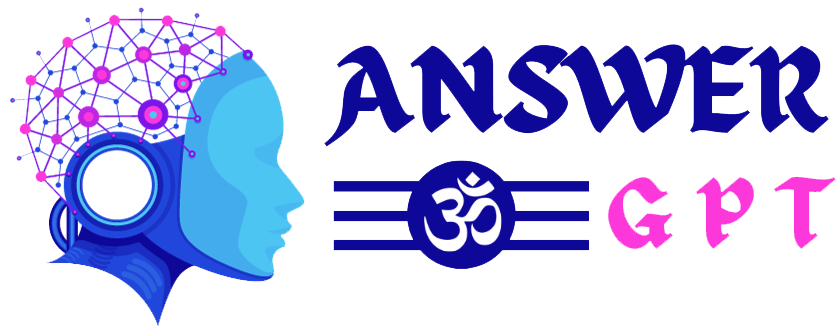Q1. Which of the following is a supervised learning problem?
- Grouping related documents from an unannotated corpus.
- Predicting credit approval based on historical data
- Predicting rainfall based on historical data
- Predicting if a customer is going to return or keep a particular product he/she purchased from e-commerce website based on the historical data about the customer purchases and the particular product.
- Fingerprint recognition of a particular person used in biometric attendance from the fingerprint data of various other people and that particular person
Accepted Answers: Predicting credit approval based on historical data Predicting rainfall based on historical data Predicting if a customer is going to return or keep a particular product he/she purchased from e-commerce website based on the historical data about the customer purchases and the particular product. Fingerprint recognition of a particular person used in biometric attendance from the fingerprint data of various other people and that particular person
Q2. Which of the following is not a classification problem?
- Predicting the temperature (in Celsius) of a room from other environmental features (such as atmospheric pressure, humidity etc).
- Predicting if a cricket player is a batsman or bowler given his playing records.
- Predicting the price of house (in INR) based on the data consisting prices of other house (in INR) and its features such as area, number of rooms, location etc.
- Filtering of spam messages
- Predicting the weather for tomorrow as “hot”, “cold”, or “rainy” based on the historical data wind speed, humidity, temperature, and precipitation.
Accepted Answers: Predicting the temperature (in Celsius) of a room from other environmental features (such as atmospheric pressure, humidity etc). Predicting the price of house (in INR) based on the data consisting prices of other house (in INR) and its features such as area, number of rooms, location etc.
Q3. Which of the following is a regression task? (multiple options may be correct)
- Predicting the monthly sales of a cloth store in rupees.
- Predicting if a user would like to listen to a newly released song or not based on historical data.
- Predicting the confirmation probability (in fraction) of your train ticket whose current status is waiting list based on historical data.
- Predicting if a patient has diabetes or not based on historical medical records.
- Predicting if a customer is satisfied or unsatisfied from the product purchased from e-commerce website using the the reviews he/she wrote for the purchased product.
Accepted Answers: Predicting the monthly sales of a cloth store in rupees. Predicting the confirmation probability (in fraction) of your train ticket whose current status is waiting list based on historical data.
Q4. Which of the following is an unsupervised task?
- Predicting if a new edible item is sweet or spicy based on the information of the ingredients, their quantities, and labels (sweet or spicy) for many other similar dishes.
- Grouping related documents from an unannotated corpus.
- Grouping of hand-written digits from their image.
- Predicting the time (in days) a PhD student will take to complete his/her thesis to earn a degree based on the historical data such as qualifications, department, institute, research area, and time taken by other scholars to earn the degree.
- all of the above
Accepted Answers: Grouping related documents from an unannotated corpus. Grouping of hand-written digits from their image.
Q5. Which of the following is a categorical feature?
- Number of rooms in a hostel.
- Minimum RAM requirement (in GB) of a system to play a game like FIFA, DOTA.
- Your weekly expenditure in rupees.
- Ethnicity of a person
- Area (in sq. centimeter) of your laptop screen.
- The color of the curtains in your room.
Accepted Answers: Ethnicity of a person The color of the curtains in your room.
Q6. Let X and Y be a uniformly distributed random variable over the interval [0, 4] and [0, 6] respectively. If X and Y are independent events, then compute the probability, P(max(X,Y)>3)
- 1/6
- 5/6
- 2/3
- 1/2
- 2/6
- 5/8
- None of the above
Answer:- 5/8
Q7.

Q8. What happens when your model complexity increases? (multiple options may be correct)
- Model Bias decreases
- Model Bias increases
- Variance of the model decreases
- Variance of the model increases
Accepted Answers:
Model Bias decreases
Variance of the model increases
Q9. A new phone, E-Corp X1 has been announced and it is what you’ve been waiting for, all along. You decide to read the reviews before buying it. From past experiences, you’ve figured out that good reviews mean that the product is good 90% of the time and bad reviews mean that it is bad 70% of the time. Upon glancing through the reviews section, you find out that the X1 has been reviewed 1269 times and only 172 of them were bad reviews. What is the probability that, if you order the X1, it is a bad phone?
- 0.136
- 0.160
- 0.360
- 0.840
- 0.773
- 0.573
- 0.181
Accepted Answers: 0.181
Q10. Which of the following are false about bias and variance of overfitted and underfitted models? (multiple options may be correct)
- Underfitted models have high bias.
- Underfitted models have low bias.
- Overfitted models have low variance.
- Overfitted models have high variance.
Accepted Answers:
Underfitted models have low bias.
Overfitted models have low variance.
